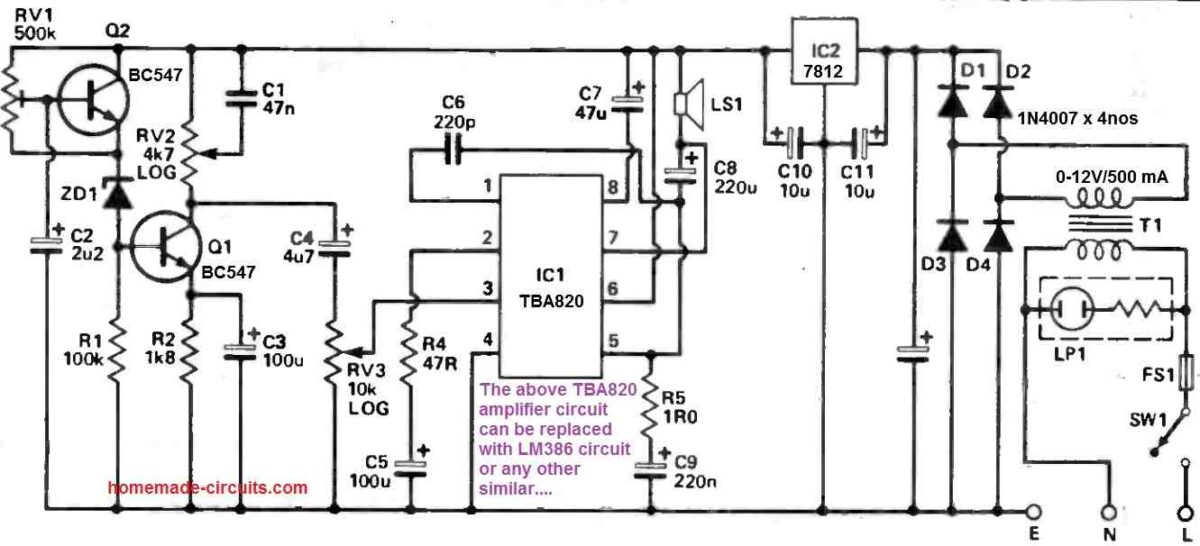The sleep aid circuit appears to be particularly effective when used with young children experiencing restless nights. This can, in turn, contribute to the entire household enjoying uninterrupted sleep.
With the sleep aid device operating next to you, you can customize the volume and depth settings according to your mood. Then, recline and focus your attention on the sound.
Over time, the sound will begin to have an almost hypnotic effect – continuously changing, yet consistently the same.
Before long, you will find yourself being carried away by the waves of sound until there's no option but to gently drift into a profound and soothing slumber.
What is a Sleeping Aid Circuit
A sleep aid circuit is an electronic circuit which helps the user to sleep better. It generates soothing sound effects through white noise.
This noise is random audio signal consisting of frequencies within all ranges audible to humans. This continuous and consistent generation of sound can mask other background noises and create a calming environment.
This is in turn can help promoting relaxation and improving sleep quality for the user.
The circuit normally works with a zener diode noise generator stage and an amplifier to produce the white noise and transmit it through a loud speakers
Circuit Description

Describing the circuit diagram, the sleeping aid device enables the adjustment of both sound volume and depth. It also facilitates circuit tuning to achieve optimal output.
RV1 establishes operational parameters for ZD1, enabling it to generate maximum output.
Q1 significantly boosts the output, while RV2 fine-tunes the sharpness of the high-frequency cutoff. IC1 enhances the sound signal and propels it through the speaker.
The voltage amplification of IC1 is determined by R4. C6 moderates the amplifier's gain at higher frequencies to maintain stability.
R5 and C9 alter the load on the amplifier, giving it a more resistive characteristic at higher frequencies. This modification aids in transient response and overall stability.
IC2 functions as a voltage regulator, ensuring a consistent 12V power supply for the circuit.
Hi Swagtam.
Is the 220nf value of C9(Electrolytic Cap) correct?
Regards
Jan
Hi Jan, in the diagram C9 is 220 nF…
Hi Jan, you may have to refer to the IC datasheet to confirm whether the value is correct or not, or if in doubt you can simply replace the amplifier section with an LM386 amplifier circuit…or any other amplifier as per your preference…
Hi Swagatm,
I have build this circuit but unfortunately I can not get the Zener diode to oscillate. PIN 3 of IC1 gets no signal. I have done fault finding with my scope. Everything seems to work OK, except for the Zener.
Your advice will be much appreciated.
Regards
Jan
Hi Jan,
It can be difficult for me to check why the zener is not generating the noise in your circuit.
You can do one thing, use any “White noise generator” circuit and integrate its output with the potentiometer of the amplifier circuit.
You can try one of these white noise generators or any other available online.:
https://www.homemade-circuits.com/white-noise-and-pink-noise-generator-circuit/
Thank you Swagatam I will certainly do that.
You are welcome Jan…
Buenos días Sr. Gracias por publicar sus proyectos.
En el diagrama, el diodo zener no indica su voltaje de trabajo me puede decir?
Thank you Franklin, you can use any zener diode between 3 V and 6 V.
Goodmorning Sir. I noticed that in the diagram the capacitor after the diodes D1 and D3 has no value. Can you please give it?
Goodmorning Rosario, that capacitor is a simple filter capacitor, which can have any value between 1000uF/25V and 2200uF/25V
Thanks